“Oh, I could never give up cheese.”
If I had a dollar for every time I’ve heard that line, I’d have, well, a lot of dollars.
There are many reasons that cheese is so tough to say goodbye to. There’s the taste, of course. The mouthfeel. The dopamine-firing saturated fat, and the sky-high sodium levels. And the way so many Western cultures’ iconic meals feature cheese as a main, no indispensable ingredient: lasagna, blintzes, enchiladas, cheeseburgers, and, in the top slot in the US, pizza.
Of course, as addictions go, you might argue, cheese isn’t that bad. It’s delicious, it contains calcium and vitamin A, and it’s got a bunch of protein. What’s the problem?
The Problems with Cheese
Cheese is one of the leading sources of saturated fat and sodium in the standard Western diet. In case anyone missed the memo, saturated fat and sodium are not generally considered health foods, particularly in excess. And excess is what cheese is all about. According to the National Cancer Institute, regular cheese and pizza are the top two contributors of saturated fat, accounting for almost 15% of the total saturated fat intake in the American diet. That’s as much as all chicken, sausage, franks, bacon, ribs, and burgers combined! Cheese is also responsible for roughly one tenth of the sodium consumed by Americans each year.
Unfortunately, almost all cheese eaten in the industrialized world is produced in ways that degrade the environment. Regions with lots of dairy farms suffer from severe air pollution, with particulate matter coming from dust and manure, compounded by high concentrations of methane. And the effects of dairy farming aren’t simply local – the cattle industry is one of the most significant contributors to greenhouse gas emissions via, to put it delicately, cow “eructations”.
The runoff from dairy farms degrades our water supply. Wisconsin, long known as the cheese capital of America, is systematically poisoning groundwater aquifers through high concentrations of nitrogen from dairy operations. Dairy farms in California, the other primary producer of cheese in the US, are likewise responsible for egregious levels of air and water pollution, and greenhouse gas emissions.
How is the Modern Dairy Industry Contributing to the Problem?
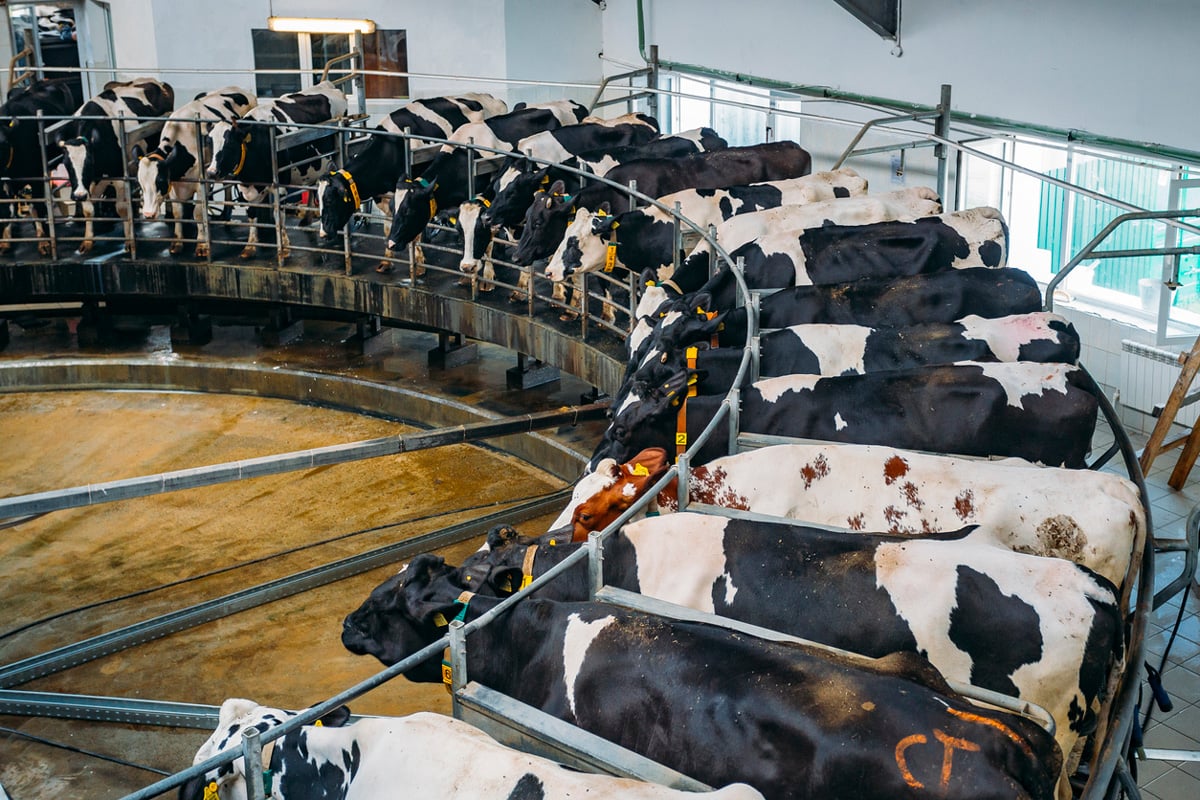
And if you’re concerned about cruelty to animals, then you probably don’t love the practices of the modern dairy industry. The milk that gets turned into our cheddar and mozzarella is produced because millions of cows are forcibly impregnated and kept in a state of constant pregnancy their entire lives.
When the calves are born, they are taken away from their mothers almost immediately, so that humans can drink that milk. The female calves are fated to join their mothers in the industrial dairy farms, while the male calves are often crated for veal.
The average dairy cow lasts about five years, and those five years are no picnic; it is estimated that more than half of all dairy cows become lame from standing on concrete floors their whole lives.
Do you remember the ads proclaiming that great cheese comes from happy cows, and happy cows come from California? Those ads, produced by the California Milk Advisory Board, depicted cows blessed by the sun, enjoying dreamy California pastures. But when the California Milk Board was sued for false and deceptive advertising, it was revealed that the photographs used in the ads, showing dairy cows happily grazing in bucolic green pastures, were actually taken in New Zealand. The reality is that California cheese, like virtually all industrial cheese on the market today, comes from cows who endure lives of unremitting pain, disease and suffering. Many never see a blade of grass in their lives.
The Good News: Nut Cheese to the Rescue
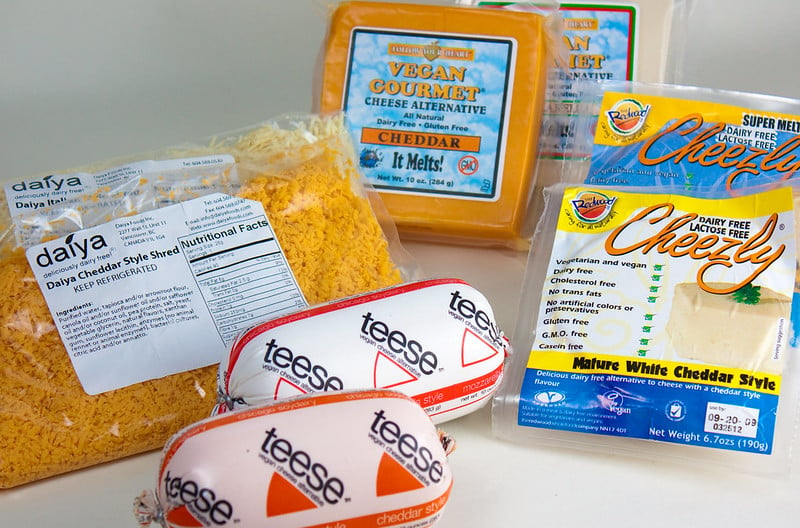
https://www.flickr.com/photos/vegan-baking/4107837884/in/photostream/www.veganbaking.net
What if – stay with me here – there was a way to enjoy all the deliciousness of cheese without harm to your health, your ethical sensibilities, or our planet? And, even more boldly, what if we could enjoy the wide variety of cheesy experiences, from ooey-gooey melty cheese, to sharp tangy Jack, to creamy buffalo mozzarella, to pungent bleu cheese, to whatever type or brand your heart and mouth desire?
Enter the hero of our story, nut cheese!
Nut cheese is exactly what it sounds like: cheese made out of nuts. Although to be completely accurate, you can use certain seeds as well, like pumpkin and sunflower. And unlike dairy, nuts and seeds ARE healthy for most people. In fact, epidemiologic studies have linked nut consumption with reduced rates of heart disease and gallstones, as well as beneficial effects on hypertension, inflammation, diabetes, and many types of cancer. (More on the tremendous health benefits of nuts here).
What makes cheese cheese isn’t the dairy, it turns out, but the chemical process that coagulates and sometimes ferments or curdles a mixture of fats and proteins. That’s where the amazing taste comes from.
A Quick History on Nut Cheese
Vegan and vegetarian cookbooks have featured nut cheese spreads for a while; an early version involved soaking cashews or almonds, blending them in water along with herbs and spices, and basically letting the mixture sit out on the counter overnight to develop a bit of tang from the fermentation process. But for a long time that was as far as it went; if you wanted a non-dairy cheddar or mozzarella, you had to make do with something that was hyper-processed and came from the health food store for somewhere north of $1 per ounce. And, to be perfectly honest, those early products left a lot to be desired in terms of taste and texture. Some of the most popular brands even included the dairy protein casein, which worked for lactose-intolerant people but not for those who might be striving to avoid all dairy products.
But we now live in a golden age of nut cheese, thanks to a bunch of creative, intrepid kitchen adventurers who have been experimenting for the past decade to produce nut-based, dairy-free cheeses that can delight almost anyone. Using probiotics or fermented grain water called rejuvelac, both of which are easily accessible to the home cook, these innovators have started producing cheeses that are downright delicious.
Types of Nut Cheese
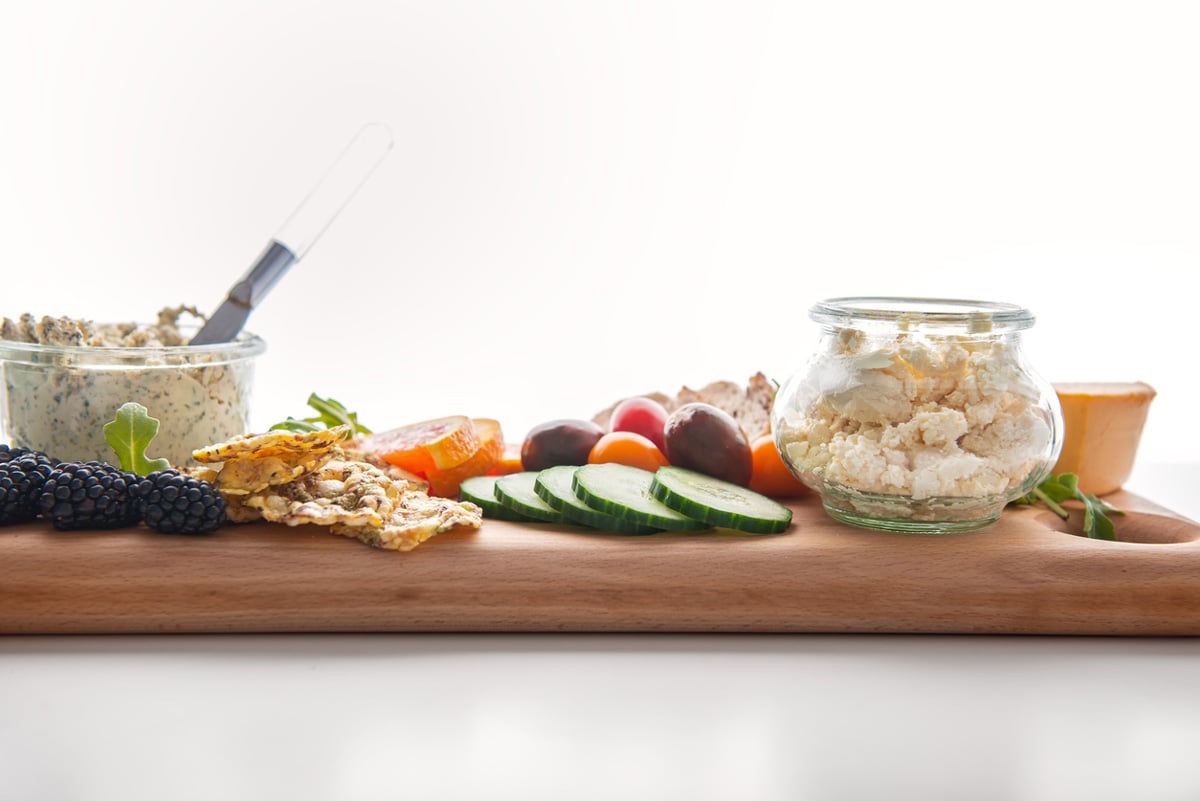
Nut cheese is often made from cashews, which produce the creamiest cheeses, along with almonds, pistachios, and macadamia nuts, as well as the aforementioned sunflower and pumpkin seeds. Sometimes coconut oil is added for additional firmness at refrigerated temperatures. Depending on the base material, the additions, and the process, you can make hard cheese, smoked cheese, meltable cheese, sliceable cheese, and even (no judgment here, if it’s your thing) stinky cheese with a moldy crust.
Uses for Nut Cheese
You can use nut cheeses exactly like you’d use dairy cheese: as a key ingredient in a velvety sauce for various dishes; as a spread on sandwiches, crackers, or veggie slices; in a dip for veggies or chips; sliced on sandwiches or crackers, and in baked dishes like casseroles, lasagnas, enchiladas, and so on.
Where Can You Get Nut Cheese?
The nearest commercially produced nut cheese is probably no farther than the “alternative dairy” refrigerated section of your local grocery or health food store. Some of these brands are fairly “clean,” while others contain unspecified natural flavorings, additives, and oils.
One of the cleanest brands is Treeline, which uses cashew nuts, probiotics, and herbs and spices. They make a soft spreadable French-style cheese, available in four flavors, and two flavors of aged artisanal hard cheese.
Dr-Cow, based in Brooklyn, makes a variety of aged and cream cheeses, using just nuts, homemade bacteria, salt, and other flavorings. Their products are also raw, organic, and non-GMO.
Kite Hill cheeses are widely available in Whole Foods stores, as well as many other locations nationwide. Their cheeses start with almond milk, to which they add salt, enzymes, and herbs. They also make yogurt, ricotta, and ravioli and tortellini.
Miyoko’s Creamery is one of the best-known and most widely available brands. Founded by Miyoko Schinner, animal welfare activist and author of Artisanal Vegan Cheeses, Miyoko’s produces wheels, blocks, cream cheeses, and even a vegan butter substitute. Most of Miyoko’s products contain processed ingredients like coconut oil and tapioca butter, so if you prefer whole food plant-based eating, read the ingredients carefully. Some of their cream cheeses are oil-free, and as of this writing, plans are afoot for Miyoko’s to debut a line of nut-free cheeses soon, too.
If you don’t live in the US, don’t despair! Simply V makes almond-based cheeses for sale in Germany and Austria, while the Italy-based Euro Company, a certified B corporation, just launched a brand of nut cheese named Fermè, using a base of just fermented cashews, water, and salt. Can’t get much cleaner than that!
If you are lucky enough to live in a community that supports an Artisan nut cheese shop, you can try versions that lack global distribution or wouldn’t survive shipping. Vromage in Hollywood, Three Girls Vegan Creamery in Guilford, Connecticut, and Riverdel in Brooklyn, New York are examples of this growing trend. If you’re in Britain, check out La Fauxmagerie in the City of London’s Spitalfields district.
You might even find a local version at a neighborhood farmers’ market. Some companies, like Blode Kuh, sell mainly through farmers markets.
And since nut cheese doesn’t take a lot of capital investment, you can always… make your own!
How Do You Make Nut Cheese?
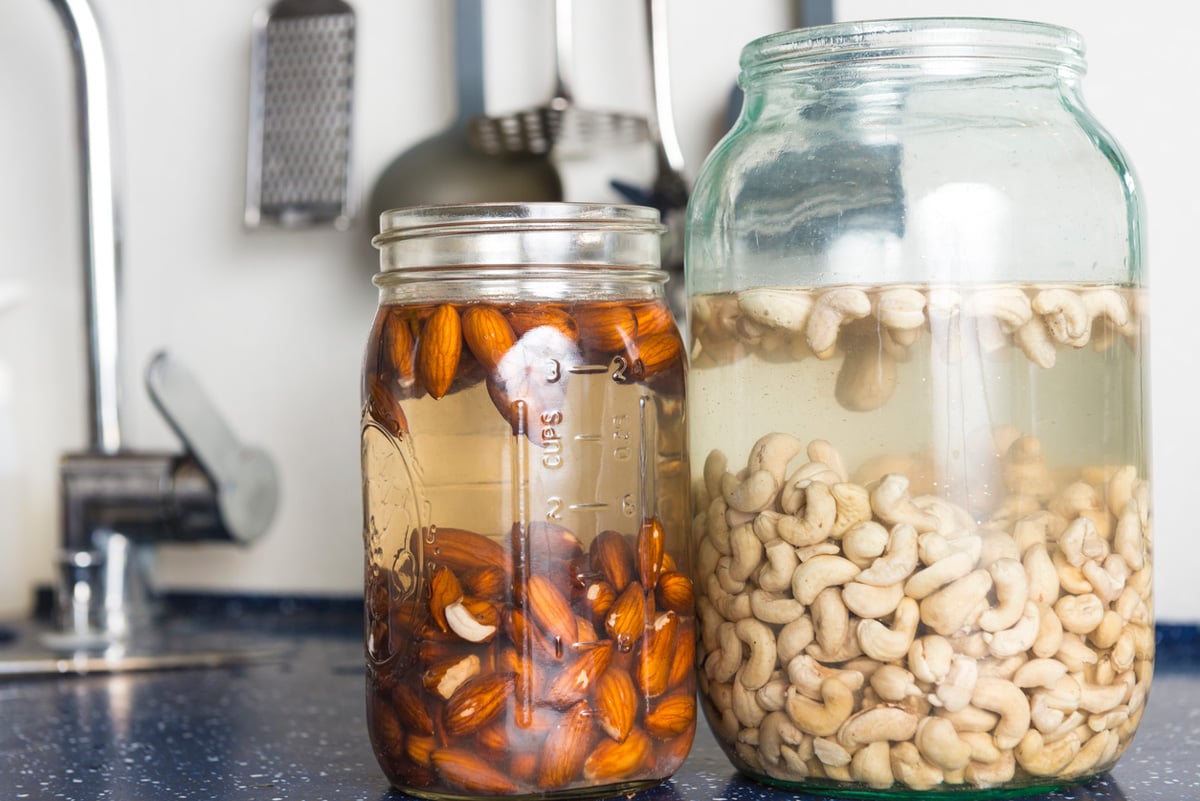
I think one of the best things about nut-based cheese is that you don’t need giant laboratories and factories to produce some of the most delicious and authentic-tasting specimens. With a few ingredients, a couple of pieces of equipment, and a short learning curve, you can make your own nut- and seed-based cheeses, and maybe share your own innovations with the world.
I’ll share a video tutorial and a couple of books with you below, but I wanted to give you the basic steps now so you can see how amazingly easy and non-intimidating it is to make your own nut cheese.
- Start by soaking your nuts and/or seeds in water. When they’ve absorbed enough water, blend them in a food processor or a strong blender.
- Then add any other “flavor” ingredients: salt, herbs, spices, etc.
- If you’re making a fermented style cheese, add probiotic powder at this point. You can literally open a probiotic capsule from your refrigerator door and tap the powder into your nutty mixture, and then stir it in.
- If you want to add more complex flavorings to mimic your favorite dairy cheeses, now’s the time. For example, Dr-Cow adds a smoky Chinese tea, lapsang souchong, to approximate the taste of smoked gouda. And for a firmer final product, add in some agar or guar gum.
- Ferment according to the recipe. Typically nut cheeses ferment at room temperature anywhere from 12 hours to up to three days. If your nut cheese isn’t fermented, simply skip this step.
- Next, chill so the nut cheese will harden. Some cheeses harden in the fridge, while others, like Miyoko’s Buffalo Mozzarella, require an ice bath to reach optimal hardness.
At this point, you can start enjoying your block, round, or spreadable cheese, or you can allow it to age to develop deeper and more subtle flavors. Some commercial nut cheeses are aged for months to approximate the texture and flavor of parmesan.
Book Recommendations for Making Nut Cheese
If that simple explanation peaked your interest and the desire to dive into nut cheese making, here are two books I recommend:
Artisanal Vegan Cheeses, by Miyoko Schinner. This was the first vegan cheese instruction manual to take advantage of the advances in nut cheese making that Miyoko, among others, pioneered. You can find hard cheeses, a remarkable Buffalo Mozzarella that allows you to enjoy caprese salad again, and a delicious semi-spreadable gouda that includes liquid smoke. Miyoko also shares recipes for dishes that incorporate her cheeses. This is more of a hobbyist book than a cookbook; you’ll need some specialized ingredients and equipment, and a fair amount of time.
This Cheese is Nuts!: Delicious Vegan Cheese at Home, by Julie Piatt. This is a great starter manual, since many of the cheeses take just a few minutes to prepare, and a day or less to age. You’ll need a dehydrator, and may find yourself buying unusual items like cheesecloth, springform pans, and various strains of probiotics, but you can make many of the recipes using normal kitchen stuff. Julie also includes recipes for dishes featuring the cheeses you’ll make from this book.
If you want to get started right now with a super simple nut cheese sauce, check out this video:
https://www.youtube.com/watch?v=UyKeUECSkvk
Recipes
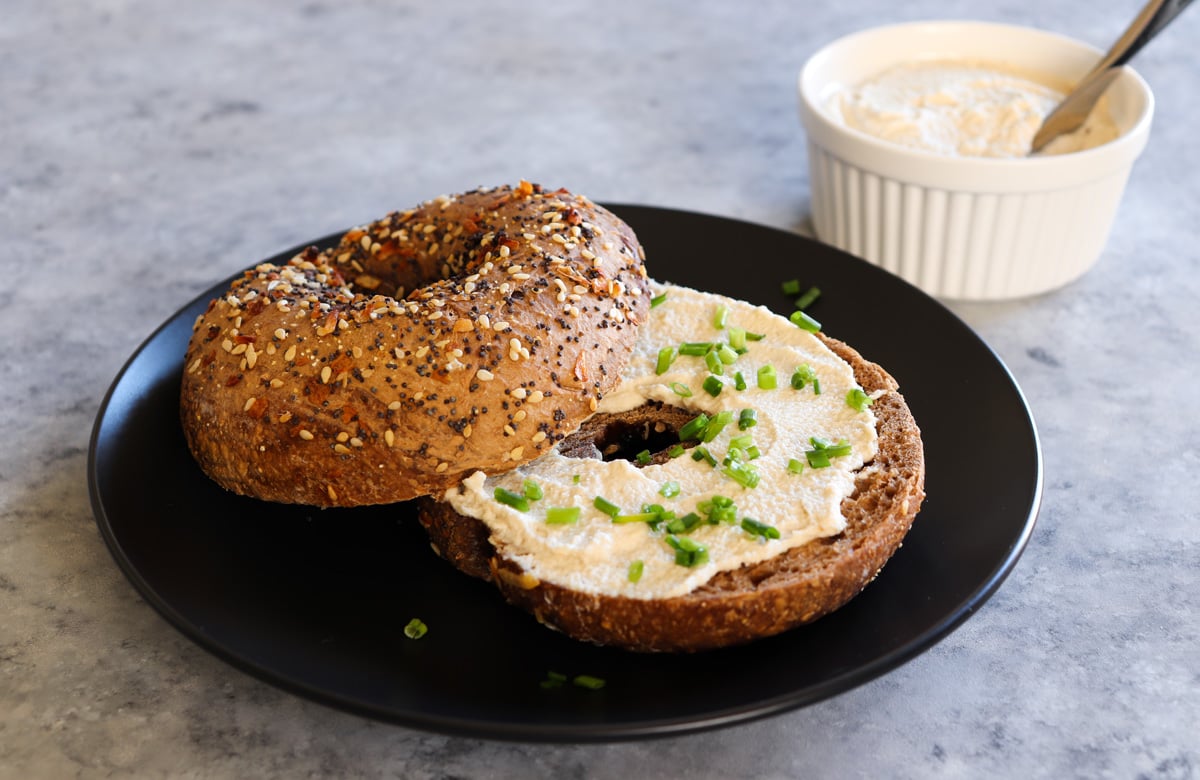
Easy Garlic & Herb Vegan Cheese by Minimalist Baker
This spreadable cheese gets its tanginess from garlic, lemon, nutritional yeast, and salt. You can use it anywhere you’d use a fancy French cream cheese like Boursin. Chilled, this will last for days, if you have that much self-control.
Classic Vegan Cashew Cheese Sauce by Loving It Vegan
It would be an insult to compare this cashew cheese sauce to Velveeta, but you can serve it the same way you would a melty cheese sauce. Drizzled over baked potatoes, as a pasta sauce, and as a flavor kick for homemade vegan pizza, this sauce is about as all-purpose as it gets. And if you have a high-powered blender, you don’t even need to soak the cashews.
Vegan Sunflower Seed Cheese by It Doesn’t Taste Like Chicken
Those with nut allergies do not have to feel left out with this easy and delicious spreadable wheel of sunflower seed cheese. It gets its amazing flavor from lemon juice, miso paste, smoked paprika, and turmeric. For an oil-free option, here’s another recipe from Sweet Potato Soul.
Pistachio Nut Cheese by Nest & Glow
This recipe is oil-free, and features sprouted pistachios for that extra bit of healthiness. It relies on agar agar powder for thickening, which means you can be enjoying it within a couple of hours. The pistachios combine with nutritional yeast, maple syrup, and apple cider vinegar for a creamy and yummy cheese that pairs well with crackers and dried fruit.
Sour Cream ‘n Onion Cream Cheese by Dreena Burton
This recipe, featuring soaked cashews as the base, gets its unique flavor from green onions, miso, and lemon juice. It uses guar gum, which helps give a slight viscous texture that more resembles commercial dairy cream cheese. It’s not essential to the flavor, however. So, if you don’t have it, or don’t want to use it, you can omit and simply chill the mix to help it set more before serving.
So… Will You Try Nut Cheese?
There’s no doubt about it: cheese can be tasty. But you don’t need cows to make it! With a bit of effort, and willingness to step outside the box, you can make nut cheeses that could endear the most discerning turophile (that’s a word that means cheese lover, which I looked up just for you). And with all the health benefits of nuts and seeds, you can do your health a good turn, in the process. All 100% moo-free.
Bon appétit, cheese lovers!
Tell us in the comments:
- If you’ve given up dairy cheese, what helped you kick the habit?
- What’s your favorite plant-based cheese?
- Have you ever made your own fermented nut or seed cheese? How did it go?
Read Next
Featured Image: iStock.com/krblokhin



